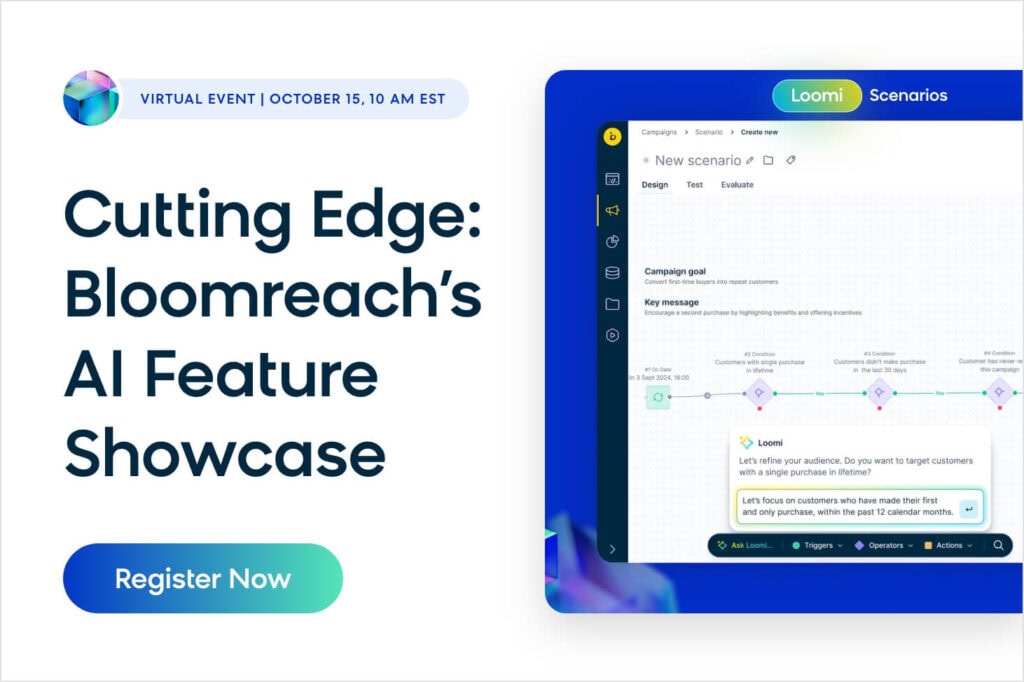It’s news to no one — AI is fundamentally upheaving ecommerce marketing as we know it. Gartner recently reported that 92% of companies are planning to enhance their operations with AI in 2024, with models offering the potential to increase efficiency, improve personalization, and accelerate decision-making.
Just because AI is more available than ever before, however, doesn’t mean that integrating it into your operations is easy. On the contrary, teams must navigate a unique set of challenges to successfully deploy AI. We’re not just talking about technical challenges, either — the introduction of AI is also raising ethical questions, with concerns related to bias and employee rights at the forefront of many people’s minds.
To utilize AI to its full potential, teams must focus on these challenges just as much as the technical ones and create a sense of psychological safety in the workplace that enables employees to engage in critical discussions about the impact of AI.
What Is Psychological Safety?
Psychological safety is a shared belief held by members of a team that it’s okay to express their ideas and concerns, speak up with questions, take risks, and admit mistakes — all without fear of negative consequences. As described by Harvard Business School professor Amy Edmondson, who coined the term, “it’s felt permission for candor” when discussing challenges, conflicts, or obstacles at work.
Psychological safety is not just a convenience. On the contrary, it can be a differentiator that enables teams to unlock their best work. In Google’s groundbreaking Project Aristotle, a two-year initiative focused on identifying the patterns and behaviors within teams that lead to high performance, researchers found that teams with higher levels of psychological safety achieved significantly better results, particularly when focused on collaborative, creative, and novel problems.
As we transition into an AI-enhanced workplace, psychological safety is important for enabling employees to voice their concerns about AI adoption. In particular, employees may feel worried about the safety of AI and, more frankly, whether AI will eliminate their jobs.
Having an environment of psychological safety allows team members to navigate these concerns openly — without fear of retribution — so that they can ultimately recognize AI as a multiplier of their value and utilize it with confidence.
The Evolving Relationship Between Humans and AI
Securing employee support for AI is important because although AI is often celebrated for reducing human involvement, the reality is that employee guidance is critical for deploying AI at scale.
As it exists today, AI can’t determine why a campaign is being run. It can’t lay out the best marketing roadmap, merchandising strategy, or campaign plan without first being given the right training data, guardrails, and brand guidelines.
Furthermore, AI algorithms can reproduce cultural biases when left unchecked, often resulting in outsized negative impacts. For example, AI-powered automated recruitment systems have been shown to undervalue women for technical roles, assuming that the underrepresentation of women in these roles in historical records was the result of conscious hiring decisions rather than systemic gender biases. In such situations, a human’s ability to spot and mitigate any biases being built into AI algorithms is critical for creating effective and efficient systems.
As AI becomes more advanced, marketers and merchandisers will hold the responsibility of ensuring AI models stay on track and achieve a positive impact. Raj De Datta, the CEO and co-founder of Bloomreach, explains, “If AI is the pilot, then we are the air traffic controllers. We are managing hundreds of AI pilots in the sky, making sure the planes land effectively. These planes certainly can’t take off and land without us guiding them accordingly.”
This is the future that Bloomreach is working toward, where marketing teams focus on the why, what, and how while AI takes care of the legwork. And, we’re building this future not simply because it’s possible — this level of AI-powered marketing and merchandising is quickly becoming necessary as AI changes the way your customers shop.
How To Create Psychological Safety in the Age of AI
With marketers and merchandisers playing a crucial role in the age of AI, your team members’ confidence in leveraging AI will be paramount. Here are three tips for creating psychological safety so that employees can successfully navigate questions related to AI safety and ultimately develop more effective AI systems.
Actively Invite Input
For many teams, implementing AI means navigating complex, unfamiliar territory. AI is not only novel but also important, with leaders across industries identifying the development of AI systems as a top priority for years to come. Such circumstances may make employees hesitant to voice their concerns. It’s important for leaders, therefore, to actively invite employees to share their perspectives, either in public or private forums. In doing so, leaders must make it clear why employees’ voices matter, and respond productively when employees do volunteer their concerns.
Promote a Culture of Experimentation Without Fear of Failure
Discovering the most effective way to utilize AI will require testing and learning — and occasional mistakes. For employees to feel confident in their use of AI, it’s important to grant them the freedom to experiment and discover the best way to use AI in their respective workflows. Employees must feel free to propose ideas, run experiments, and have candid conversations about how best to utilize AI — all without retribution.
Develop Training Programs That Align AI Tools With Team Goals
As your team begins to utilize AI, it’s important to ensure that AI is deployed in service of your goals and not for its own sake. Offer training programs that allow employees to understand how they can use AI to accomplish their objectives more effectively. In doing so, it’s important to enforce that AI is available as a tool to help employees hit their goals and not as a means of reducing their responsibilities.
Evolving the Workplace for an AI-Driven Future
Success in our AI-powered future will require not only new technology but also a rethinking of the way we work.
Today, we’re already seeing employees enhance their output with AI as their co-pilot. As AI continues to advance, we may begin to see AI take on more responsibility, with employees functioning as overseers focused on building effective and efficient systems. This transition will demand psychological safety in the workplace as employees navigate questions related to their evolving relationship with AI.
Bloomreach has been developing leading AI solutions for ecommerce for over 15 years. As we look to the future, we’re focused on enabling marketers and merchandisers to succeed in an AI-driven future and on helping leaders shape the workforce for that new reality.
To learn more about what this future will look like, you can tune in to Cutting Edge, our AI feature showcase on October 15th. We’ll be discussing how AI is changing the future of personalized search and marketing, with live product demos and real-world customer examples. Register today!














